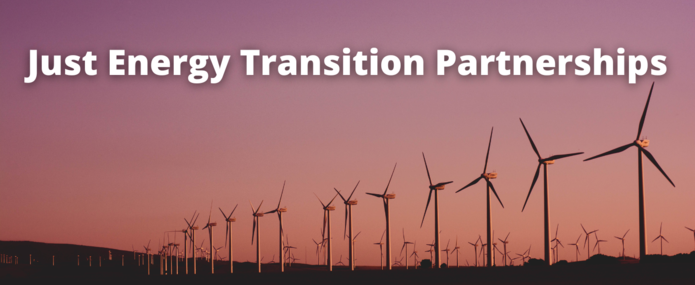In the lead-up to COP27, the potential announcement of several country-specific financial deals, the so-called Just Energy Transition Partnerships (JETPs), has been generating much expectation for their potential to re-build trust in the climate negotiations and unlock action, largely in coal-dependent emerging economies. These announcements will follow last-year’s South African deal, and respond to the G7 commitment in June 2022 to replicate such a deal in countries like India, Indonesia, Senegal and Vietnam. However, it is now becoming apparent that the outcome is highly uncertain. Under what conditions could JETPs carry out their promises?
From the perspective of in-country experts from developing countries and contributors to the architecture of the Paris Climate Agreement, we observe this development as both encouraging but also as potentially containing red flags. These may be reflected in the form of silence, criticism, or delays in JETP political announcements at COP. In our view, this should not be interpreted as a sign of lack of ambition by large emerging economies but rather a refusal to continue backing an inadequate international response. The international climate negotiations have not yet secured the quantum or type of financial assistance that is commensurate either with the needs of developing countries in transitioning or the global decarbonisation imperative. Further, the dominating discourse focuses on demonstrating additional mitigation without sufficient attention to country sovereignty and ongoing planning efforts.
To be meaningful to emerging economies, JETP deals have to be qualitatively and quantitatively different from both climate and development finance as we know it. Importantly, they should be understood in the context of historical path dependence and connected responsibilities and the global nature of the commitment to put the world on a 1.5°C path. To be meaningful to the global efforts in the fight against climate change, JETPs should help testing concrete new ways of working and addressing particular problems that have predominantly been discussed on a theoretical level. From a close observation of South Africa’s pioneering experience of the past year, we share some thoughts on the form of these improvements, and what it would take to deliver on them.
JETPs must make a difference on the amounts of mobilised money. The South African JETP looks to provide $8.5 billion finance for the next 3-5 years. This is a drop in the ocean of the actual costs of the South African transition which have been estimated around $250 billion by 20501 . There must therefore be sufficient public concessional finance in this initial amount to catalyse a larger scale of investments, which are expected to be private. South Africa’s JETP investment plan has not yet been released, so we do not yet know if this will be the case. JETPs must signal that the wealthy countries are serious about meeting the initial Paris Agreement climate finance target of $100 billion per year, getting ready for an adequate post-2025 commitment and, given the scale of the need, that this finance is largely concessional and based on grants instead of loans and designed to leverage additional private capital.
Secondly, JETPs need to become a reference for new ways to ensure aligning financial flows with a low-carbon and sustainable future—as required in Art 2.1.c of the Paris Agreement. To this end, JETPs need to move from the historical project level focus of climate finance to ‘whole-system’ approaches that put development as central. This means that development outcomes need to steer the discussion as formulated by the countries–be this energy access, industrialisation, poverty, or competitiveness. It also means addressing barriers that are not only technical and financial, but very significantly also institutional and political. Addressing debt levels can be the most important mitigation measure, we should be ready for innovation. This requires flexibility and new metrics to performance, including finding reasonable ways to sweep commitments to specific emissions outcomes on an economy-wide basis in exchange for financing only a small part of the investment which will be required to achieve this.
Thirdly, JETPs must be negotiated differently than past deals. In our interconnected world, the donor system of developed countries setting the terms of financial support has to give way to true partnerships, where developing countries lead and own the investment plans and enabling policies for their transitions. Processes such as LT-LEDS development can be used to generate this input, but also to anchor the outputs of these deals through their continuous revision, supporting the build-up of consistent public policy and investment strategies over time. The South African experience is informative as to what is needed here. It started with well-formulated country needs, an indispensable condition and a reminder of the importance of investing in in-country capacities. What South Africa has done less well to date is to raise the bar on transparency in terms of how financial needs are formulated and expressed, despite recent progress on this in the just energy transition space.
Based on the South African experience, JETPs can have other very important benefits, highlighting the trigger of a focused domestic discussion to crystallise specific country investment needs coherent with long-term climate and development goals. However, as a specific finance mechanism, we think JETPs will only make a difference globally if they show the way for cooperation going forward, enhancing justice and equity of the international financial system, and demonstrate a meaningful shift in the quantum of finance provided.
- 1 Blended Climate Finance Task Force and Complex Systems in Transition, 2022








